Curing the Garden Blahs with Color
I hope you all had a great weekend and are ready for the week ahead. I know I am 🙂 I would like to continue on with our “Curing the Garden Blahs” series and focus on one of my favorite aspects…..color.
It doesn’t take a rocket scientist to know that just by adding some color to our wardrobe, our food, our homes, etc. we can look better, enjoy our food more and create an atmosphere in our homes. Well, adding color in the garden creates much more interest and increases the beauty and curb appeal of your garden as well.
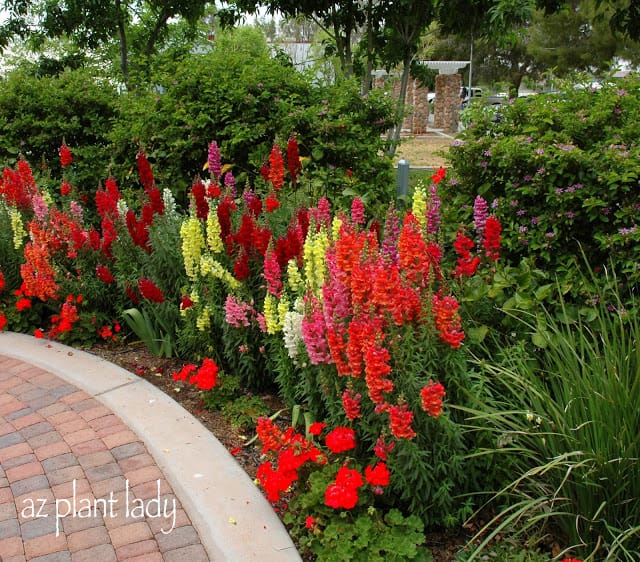
As we get started, I would like you first to become acquainted with our friend, the color wheel…..

Color is an integral part of landscape design. Now, I am not going to go into a lot of detail or complexity, but will keep this fairly simple.
Most of us know what we like or don’t like in regards to color. We each have a favorite color and some of us may have a color that we dislike. What is even more interesting is that if you have a color that you dislike in your house or in your wardrobe, you may love it in your garden. **For me, that color is orange….I don’t care for it in my house or in my wardrobe, but I do love it in my garden. I wonder why I like it in some places and not in others?
There are two main color groups for the garden. The first group consists of warm colors which are the reds, oranges and yellows. When used in the landscape, they grab your attention right away and excite you. The tend to make a large area look smaller and more intimate. If you want to create a focal point, then plants with warm colors are what you would want to use. For those of you who live in cooler climates, using warm colors in the garden can ‘visually’ warm you up 🙂
The blossoms below are a perfect example of warm colors….
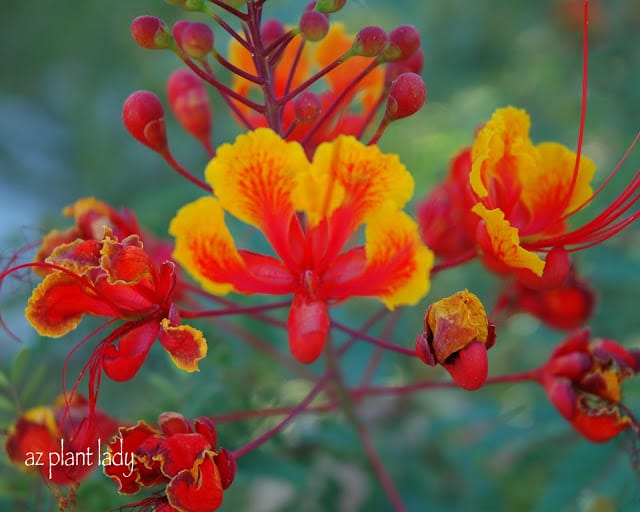
Red Bird-of-Paradise (Caesalpinia pulcherrima)

Yellow Bells (Tecoma stans stans)
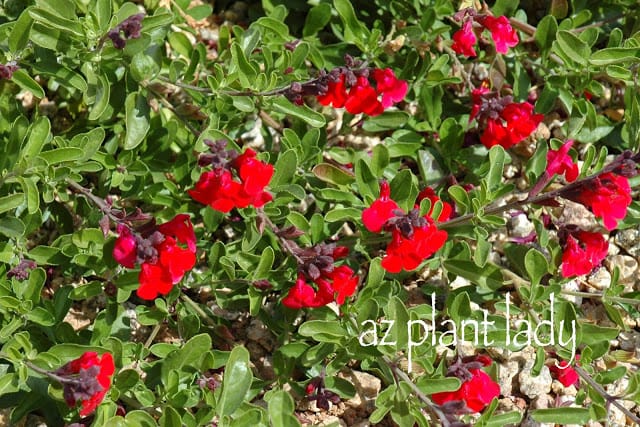
Red Autumn Sage (Salvia greggii)
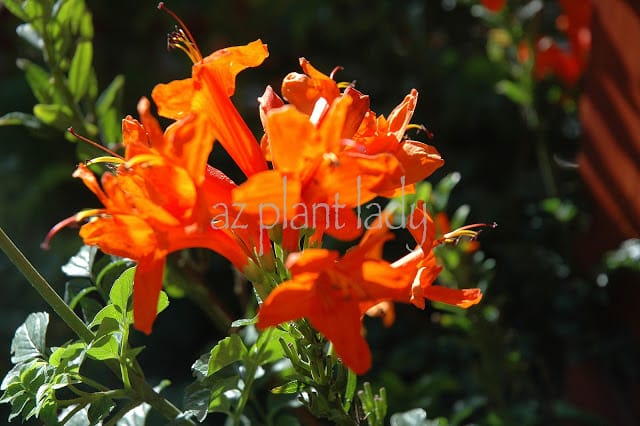
Cape Honeysuckle (Tecomaria capensis)
Our next group consists of cool colors such as pinks, purples and blues. These colors tend to make you feel relaxed and can make a garden appear larger. Cool colored plants would be the ideal choice for a quiet spot in the garden. If you live in a hot climate, you may want to incorporate cool colors in your garden as a way to ‘visually’ cool off.
Here are some examples of plants with cool colors….
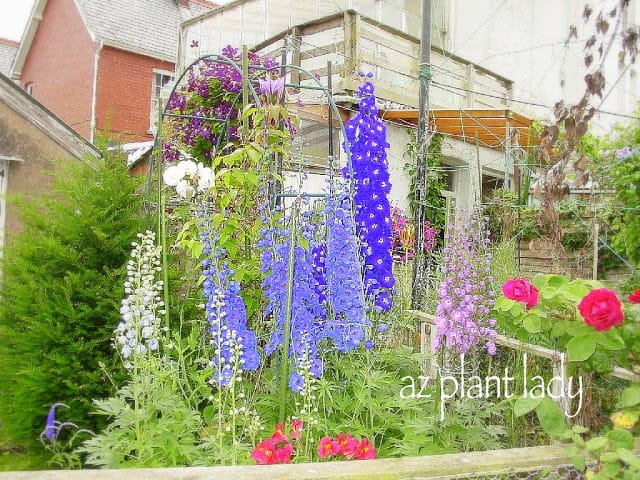
Delphiniums
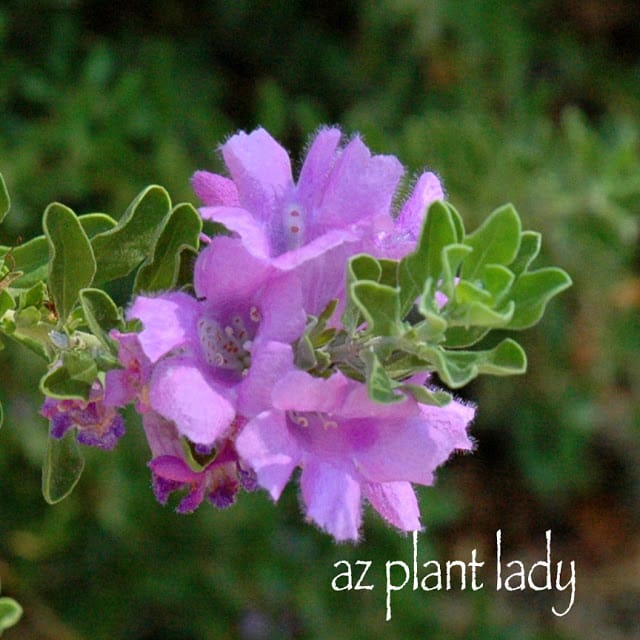
‘Rio Bravo’ Sage flower (Leucophyllum langmaniae ‘Rio Bravo’)
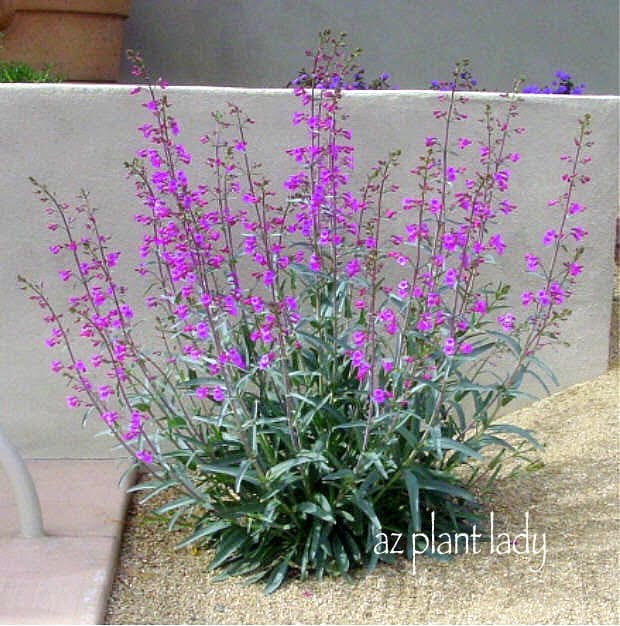
Parry’s Penstemon (Penstemon parryi)

This bouquet of Pink and White Globe Mallow (Sphaeralcea ambigua) flowers and Goodding’s Verbena are a perfect example of cool colors.
Now, how do you decide what colors look good together?
Well in general, warm colors look great together as do the cool colors. But you can also mix them up to create a contrast that really catches your attention. To do this, let’s go back to our color wheel….
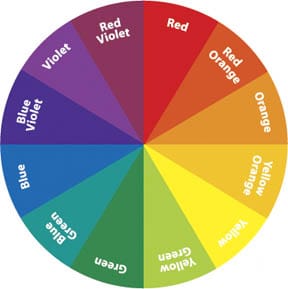
Now, think of the phrase “opposites attract”, because in this case it is true. Opposite the purples and blues you will find the yellows and oranges. When paired together, the contrast between the two colors immediately grabs your attention.
For example, picture Cape Honeysuckle shrubs with Purple Trailing Lantana growing in front of them…..
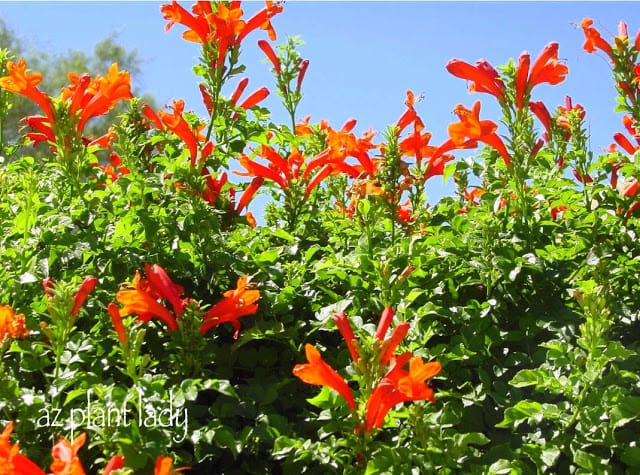
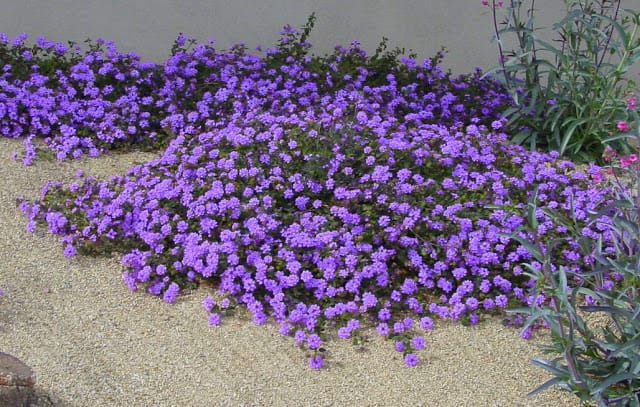
Here is another example….

The blossoms of Orange Jubilee (Tecoma x Orange Jubilee) and Green Cloud Sage (Leucophyllum frutescens ‘Green Cloud’) contrast very well.
Now I would like to share with you an excellent tip and it involves the color yellow. Now you may be thinking that yellow really does not do much for you and I would actually agree….it is not my favorite color. BUT, do not underestimate the power of yellow in the landscape. By just adding a few yellow flowering plants among your other colors, they will cause your other plants to look better. Really, it’s true. Yellow flowering plants contrast so well with other colors….I promise you they will make your garden look better.
For example, look at the container plantings below….
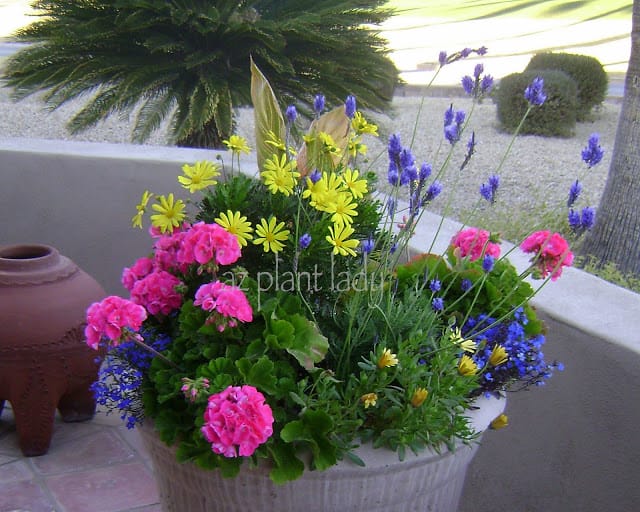
We have a collection of Lavender, Lobelia and Geraniums….all cool colors. But the addition of yellow daisies and gazania, all the colors really ‘pop’.
So now are you all ready to head to the nursery and mix your colors? Well, I have a word of caution first…..if you intend to plant two different plants together so that you can enjoy the way their colors look next to each other when they are in bloom…..make SURE that they bloom at the SAME time. You would be surprised at how many people make the mistake of purchasing plants, relying on the color picture of the plant tags thinking the colors would look great together….only to find later that one plant blooms in spring and the other in summer.
I do hope you are finding these posts on “Curing the Garden Blahs” helpful. Our next installment will cover how texture can create interest in the garden.
*****There is still time to enter my seed giveaway for Firecracker Penstemon seeds. Here is the link for those of you interested. You have until this Wednesday (September 29th).****

 Noelle Johnson, aka, 'AZ Plant Lady' is a author, horticulturist, and landscape consultant who helps people learn how to create, grow, and maintain beautiful desert gardens that thrive in a hot, dry climate. She does this through her consulting services, her online class Desert Gardening 101, and her monthly membership club, Through the Garden Gate. As she likes to tell desert-dwellers, "Gardening in the desert isn't hard, but it is different."
Noelle Johnson, aka, 'AZ Plant Lady' is a author, horticulturist, and landscape consultant who helps people learn how to create, grow, and maintain beautiful desert gardens that thrive in a hot, dry climate. She does this through her consulting services, her online class Desert Gardening 101, and her monthly membership club, Through the Garden Gate. As she likes to tell desert-dwellers, "Gardening in the desert isn't hard, but it is different."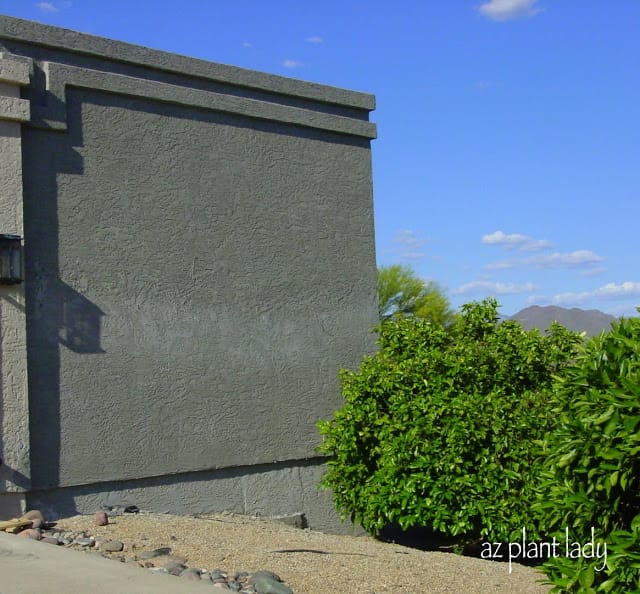
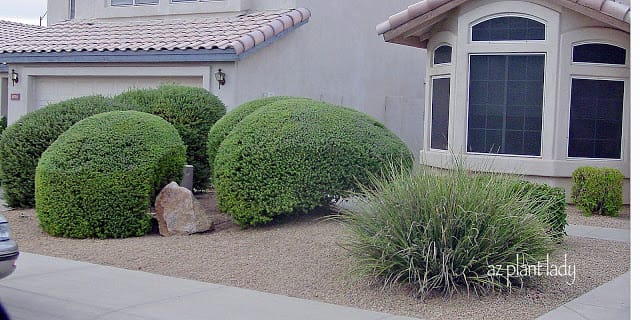
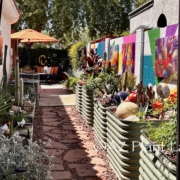








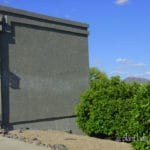
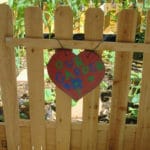
Great post, Noelle. Simply stated, clearly illustrated and helpful for those of us who are still working out the colour element for our gardens.
What a beautiful display of color!
This is a very useful post! I came across a planting of silver agaves, lavender, purple flowered sages, feijoa and blue cedars. Needless to say, the color scheme was very cool.
Hi Noelle, I used to search for these colour charts to give me some guidance before I plant my flowers. I love your purple lantana. Actually I don't cut and arrange flowers but after reading many of your posts, I am inspired. Shall do that today.
I never thought to add lavender to a container garden. Perfect plant for height and blue color that I adore. I'll add it to my list for next season.
Hi Noelle, this is a great color tutorial for both new and experienced gardeners! I really like your examples in the vases, they're so easy to visually see what you're explaining with the color wheel.
Kathy
Thanks for the tip on the yellow-I bought some yellow portulaca yesterday, that was the only color left, but yes, in the garden it looked great with the brighter colors.
I like your floral design here. Nice touch! You are obviously an expert!
Hi Noelle, i've been out of blogging for awhile due to my nephew and niece in hospital with dengue (hemorhagic fever), followed by my moving house. Now i hope i am really back to blogging. I missed a lot of your posts.
These are wonderful tutorials for the novices and the photos are great as examples. But i have a question about the C. pulcherrima. Do you call it the Bird-of-paradise there? I thought that name is a common name given to Strelitzia reginae, whose inflorescence really looks like a bird! Hmmm, in this case, i should search or i should learn new things. Thanks Noelle.
I was just wondering what colors would look well together. I have a few red geraniums on my front porch and I just set a pot of a purple orchid (that's on it's last legs) out next to them, and thought it looked nice with another color. Your article is very helpful! Thanks!
I used to be terrified of color, and often ended up with rather monochromatic gardens…all pinks…all whites. I seem to have moved past that now, thankfully. Now my problem, gardening with natives, is I'm attracted to a plant for its qualities first, and then have to decide how I can incorporate it into the garden. Can I really put a lipstick red native snapdragon next to a lavender blue coyote mint? I was taught that yellow (and white blooms, or silvery leaves) can be used in a garden to help transition between two otherwise clashing colors in a border. Some combinations seem to work better than others though, but so far I'm finding that helps.
Hello!
I am so thankful that some of you found this post helpful in adding color to your garden.
Andrea, I am sorry to hear about your niece and nephew. I do hope that they are recovering and feel better soon. In our area, we call C. pulcherrima Red Bird-of-Paradise of Mexican Bird-of-Paradise. In other areas it is called Royal Poinciana. It is not Strelitzia reginae, which is usually just called Bird-of-Paradise. The confusion that common names sometimes cause is why I usually prefer to refer to plants by the botanical names because there is no mix-up that way. By the way, did you know that Strelitzia reginae is the city flower of Los Angeles, CA?
Thanks for your question 🙂
Great tutorial, Noelle;
Sometimes, when I'm planning a new garden, I go to the paint dept. at Homer Depot and grab those free paint strips, collecting all my favorite colors. It's nice stimulus to figure out a color plan.
I love experimenting with colour in the garden too Noelle though I make plenty of mistakes but have been getting more adventurous with my planting schemes ever since reading the late Christopher Lloyd garden book on colour. I too have discovered the great attributes that a little bit of yellow can do to boost the colours of ot her plants surrounding it. 🙂 Rosie
Just found your blog and it is fantastic. Love this post on colour combinations. Do you have the monthly bouquet in the winter? Take care and have a great day.
Great post, Noelle! I'm not much into the science of color, so you've put much into perspective. Your choices look wonderful and make good sense.
Another great informative post, Noelle. Using color is something I've learned through trial and error. I started out with mostly pastels, but am learning to like hotter colors as well. I don't usually like orange either, but this summer the one area of our MG Idea Garden that drew me in every time I was there was a mixed border of oranges and reds. It's changed my mind completely about what I "like" in my garden.
I like to keep warm colors with warm, and cool colors with cool. Sometimes the plants in my garden pop up where they weren't planted, and it works anyway though. http://windowontheprairie.com/ Suzanne
Noelle, This was a nice introduction to color theory. I must admit that I am one of those rare gardeners who loves yellow — in my garden, in my wardrobe, in my house, wherever. And one of the things I love about the yellows is that they look good with all the other colors in my garden. Do you have a color theory explanation for why this is the case? -Jean